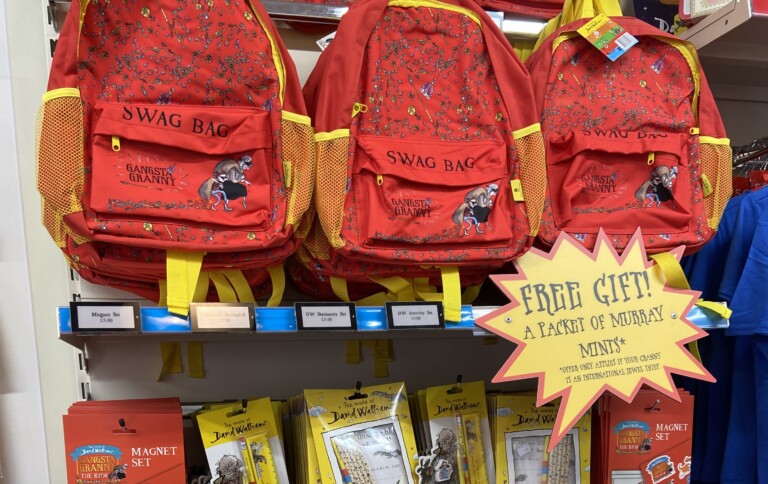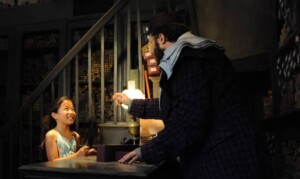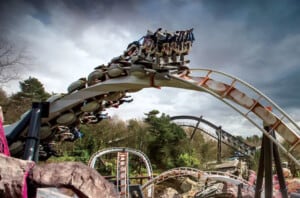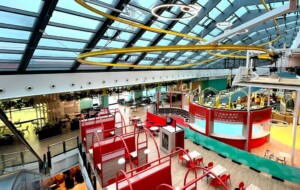by Graham Speak, Speak Consulting
I realise there aren’t many people who want a supermarket experience when they’re having a day out with family and friends. But stick with me on this one. I was lucky enough to start my career 20 years ago training in buying and marketing with one of the big grocery chains in the UK. It’s a fiercely competitive market – and, in my experience, they have to be centred around understanding their customers and how to make shopping with them easy – and in most cases, enjoyable.
Whilst there are many other considerations that attractions must keep in mind when it comes to their retail offer (like how to immerse guests, make retail feel like an experience, and balance lots of different operational needs) there are some basic retail principles that can help improve revenue and create better experiences for guests.
Here are five lessons attraction retail can learn from the grocery industry:
Consider the products you want your customers to see, and show them
This one sounds blindingly obvious, but it’s so effective. Get to know your store space and use the best spaces for best sellers, or the products you want your guests to see.
A supermarket’s prime space is its ‘foyer’ – the area everyone passes through going in and out of the store. Securing space in the foyer is the dream for buyers and their brands. The second best space is often the seasonal aisle and end-of-aisle displays. These spaces are usually reserved in a supermarket for great promotional offers or highly relevant seasonal or customer moments.
How do you match up your premium space, with the products and offers most relevant to your guests to drive a high conversion?
Too much choice isn’t always good
One of the big challenges as a supermarket buyer was making complex ranges simple, and helping customers find the products they wanted to buy. This means combining smart range selections (de-cluttering and removing too much choice), with clear visual merchandising.
Understanding your guest base first will help in attraction retail. Who are the different guests? Who influences and who buys? Why are they buying? How often do they return? Asking (and answering) questions like these will help you understand how much range and choice you need.
Balancing the fun of browsing, with the risk of having too many choices (and losing the sale) is the trick!
Be practical
In a supermarket, you’ll generally find the frozen department at the far end of the shop. After all, you don’t want to rush around the rest of the shop for fear of your shopping defrosting, do you? And supermarkets don’t want you dashing and missing seeing all their great offers either.
Signage generally helps customers find the staples like milk, eggs, and butter. Helping customers find the essentials means that frustration is removed, and they are more likely to browse other areas and pick up incremental purchases.
So, from an attraction retail point of view, where do you locate products across your site to make it easier and more logical for guests? Does a ‘buy now, collect later’ service make sense to remove a barrier to purchase and functionally make the shopping experience easier?
How do you signpost the products guests need to buy to help remove frustration? How do you position these categories and products to help drive awareness of the other great ranges you have?
Reduce barriers to conversion
This is a very broad tip, but think of times in the past when you’ve abandoned a purchase. Can’t see the price? No stock of the product you need left on the shelf? Queue too long to make the purchase?
Supermarkets have great practices that attraction retail can learn from, to reduce the risk of missing a sale:
- Price everything clearly on the shelf edge (or equivalent).
- Merchandise your store understanding average daily stock turn. Hold enough stock for the day where possible, and have clear processes in place where you know you can’t. The supermarket I worked for had set times of the day when staff would ‘rumble’ the shelves (which meant pulling all the products forward so customers could easily see and reach them).
- Understand the times of day when you need to flex up on checkout staff and introduce tech to allow guests to pay in different, more efficient ways.
These may not all be challenges for you and your attraction. However, it is worth doing a retail audit to assess where customers may be giving up (or getting frustrated) when purchasing with you.
Don’t go it alone
When I was buying and leading buying teams for retailers, we would often appoint ‘Category Captains’. These were some of our most trusted, important supplier partners, who would support us in developing our offer to grow the whole business.
Now, there was an incentive for them, as they got to influence and guide some decisions with their insights and brand focuses. However, they brought tremendous value, as they often understood specific categories more than a buyer ever could. They also knew that if they grew the total category, they would win out of that.
So, it’s worth considering – how could your supply base get more involved? If they can help improve the retail experience for your guests, they will win too.
Supermarket retailing is very different to engaging guests as part of an attraction visit. Yet many retailing foundations can be learnt from them as they’ve spent years mastering the art. Make the functional elements of shopping easy and remove barriers to conversion.
Engage, excite, involve and make retail a magical part of your business that guests want to experience. But make sure you get the retail basics right too so customers leave happy -and with a purchase or two in hand!














